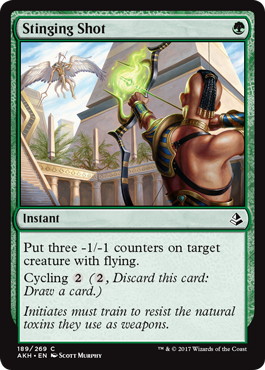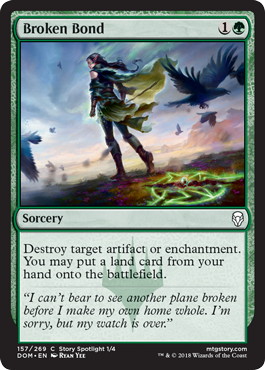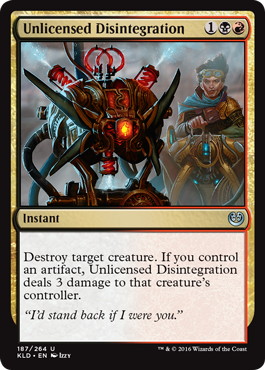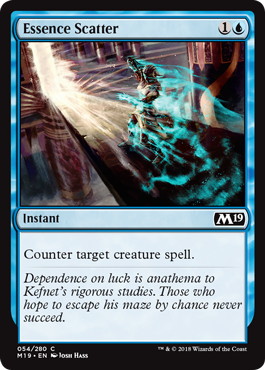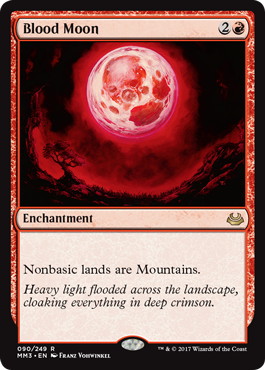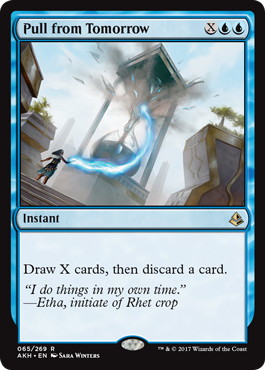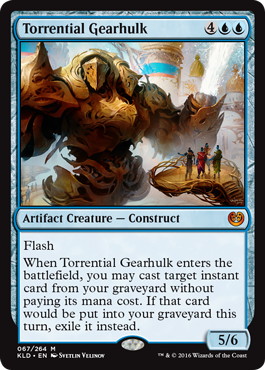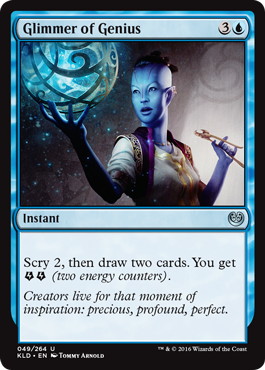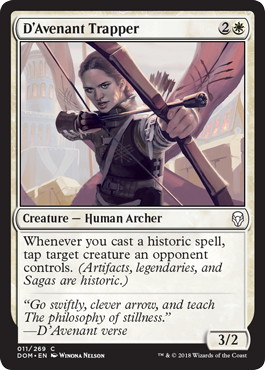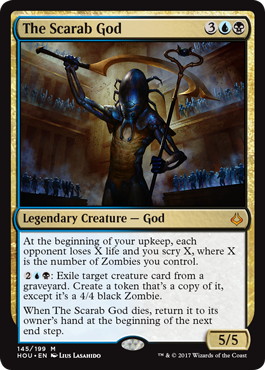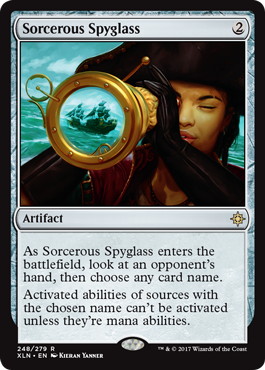Introduction
Back in the days of Hour of Devastation limited, one of my opponents on Magic Online raged in the chat after I casted 《Stinging Shot》 for their 《River Hoopoe》 in a sideboarded game.
In their mind, I should not have boarded that card in, as they only had that one single target for the anti-flying card (like 《Plummet》) in their deck. The problem with their train of thought was that I had no way of knowing that.
When you’re making the decision whether to board in a card like 《Plummet》 or not, there are multiple factors you need to consider: How important are the potential targets? How good is the card you would take out? How much does it hurt you to draw that card when they don’t have a target for it? How does it affect your curve? And of course: how many targets do you think they’ll have?
You’ll know the lower limit to that number after the first game, but you’ll never know the exact amount. The more cards you see from their deck, the more accurate your assessment is going to be. Even if you have seen their whole deck in the first game, the number might be different post-board. But sometimes you don’t see much and the best you can do is make an educated guess based on a limited amount of information.
In the 《River Hoopoe》 case, a lot of things justified bringing in the 《Plummet》: the one target I had seen was particularly good, I was quite soft to fliers in general and I was taking out a mediocre card. The matchup seemed slow, so I would have a lot of time to find a target for it. I also estimated the number of fliers in the blue deck to be more than just the one 《River Hoopoe》.
Estimating the Contents of Your Opponent’s Deck
You should always sideboard against your estimation of their entire deck, not just the cards you have seen. Let’s say you’re playing Dominaria sealed and you have a 《Broken Bond》 in your main deck.
The first game goes quite long, you only see one target for it, and that target is something like a 《Jousting Lance》. Should you board it out? If you estimate the density of targets in their deck to be the number of targets you have seen divided by the number of all cards you’ve seen, maybe yes. But there are other factors that should influence your decision.
The majority of sealed pools in Dominaria end up playing multiple artifacts or enchantments, enough for 《Broken Bond》 and 《Invoke the Divine》 to be playable cards even in the main deck – especially when many of them are as powerful as 《In Bolas's Clutches》 or 《Forebear's Blade》. So which one is more likely: “they have a deck with enough targets but had a draw that only included one of them”, or “they only have one or two targets in their entire deck”?
Now, I don’t know what the exact odds are, and I’m definitely not saying you should always keep in 《Broken Bond》 even if you don’t see any targets. I’m just saying that you should consider whether it’s more likely that they had an unusual draw, or that they have an unusual deck.
Conversely, you can gain an advantage from cards that your opponents expect you to have, even if you don’t have them, just because they have to respect the possibility of you having them.
Together with Leo Lahonen, we played a Blue White Control deck in Grand Prix Birmingham 2018 which didn’t have any creatures in it. Even after winning game 1s with the 《Teferi, Hero of Dominaria》 lock and our opponents seeing essentially our whole decks, most of them left in 《Unlicensed Disintegration》 or 《Essence Scatter》 after sideboarding just because they respected the chance of us bringing in 《Lyra Dawnbringer》 or 《Torrential Gearhulk》. Thus, they had dead cards in their deck even in the post-board games.
And I think it was the right thing for them to do: at Grand Prix Copenhagen 2018, when I switched to RB, I left in the 《Disintegration》 myself.
You can also create this same kind of situation by sideboarding out cards your opponents expect you to keep in.
《Blood Moon》 is a great example of a card like this: once your opponent has identified you as a 《Blood Moon》 deck, they are more likely to fetch basic lands instead of duals and will even be taking risks to do so. Especially on the draw you can sometimes take out 《Blood Moon》 as they lose some of their value when the opponent has the time and information to play around them.
Pay Attention to Their Specific Card Choices
The point is that when you don’t know your opponent’s exact list, you have to be prepared for a wider range of stuff than they actually have. This is one of the advantages of testing in Magic Online leagues over playtesting with your friends. When you play multiple matches in a row against a friend, you learn to play against their exact version, play style and sideboarding strategy, but not against the archetype as a whole.
When you play on Magic Online, each of your opponents will have different lists and different sideboard plans, and when you’re playing in a tournament you won’t know which one you’ll be facing. What’s good against one of them might be terrible against another. You also lose the surprise factor of playing cards your opponent is not expecting.
When playing against an unknown deck, it’s important to pay attention to their specific card choices, as some of them can reveal additional information.
As an easy example, if you see a 《Pull from Tomorrow》 from your Blue White Control opponent in Standard, you probably don’t need to play around 《Torrential Gearhulk》 in the post-board games. But if you see 《Glimmer of Genius》 instead, the 《Gearhulk》 should definitely be on your radar.
And going back to the 《Broken Bond》 case, if you see them playing cards like 《D'Avenant Trapper》, the likelihood of them having enough targets for the 《Broken Bond》 rises. After all, they chose to play the 《Trapper》 instead of some other card. That reason might be that a three-mana vanilla 3/2 is better than the alternative, but it might also be because they think they can get enough triggers for the 《Trapper》 to be a valuable addition.
Great Example in Current Standard
In Standard, Red Black 《Chainwhirler》 decks can vary from very aggressive ones to midrange-y and sometimes even almost controlling ones. Identifying where your opponents lie on the spectrum is very important for sideboarding, but it can also be very hard. At the most recent Pro Tour, Reid Duke and Owen Turtenwald played the same 75 cards and one of them was labelled Red Black Aggro and the other Red Black Midrange on the official coverage page!
I was confused by the naming conventions @wizards_magic used at #PTDOM (UW control vs UW teferi, where they used RB aggro vs RB midrange etc) Then i saw @ReidDuke and @OwenTweetenwald have the same 75 with different names pic.twitter.com/4hNzoDe8jU
— Kayure Patel (@BloodbraidElf) June 3, 2018
Now, if you compare Owen’s deck to Kazuyuki Takimura‘s list from the same top 8, they are in some sense playing the same archetype. At least they are playing a lot of the same cards. But your sideboarding should be very different against them, and therefore you should pay close attention to their card choices to know which kind of Red Black you’re playing against.
- Owen Turtenwald
- – Red Black Aggro
- Pro Tour Dominaria
- (Top 8)
1 《Swamp》
4 《Canyon Slough》
4 《Dragonskull Summit》
2 《Aether Hub》
-Land (25)- 4 《Bomat Courier》
2 《Soul-Scar Mage》
4 《Scrapheap Scrounger》
2 《Kari Zev, Skyship Raider》
4 《Goblin Chainwhirler》
2 《Pia Nalaar》
3 《Hazoret the Fervent》
2 《Glorybringer》
-Creature (23)-
2 《Lightning Strike》
2 《Unlicensed Disintegration》
3 《Heart of Kiran》
3 《Chandra, Torch of Defiance》
-Spell (12)-
3 《Magma Spray》
2 《Rekindling Phoenix》
2 《Chandra's Defeat》
1 《Glorybringer》
1 《Abrade》
1 《Doomfall》
1 《Unlicensed Disintegration》
-Sideboard (15)-
Owen’s deck is one of the most aggressive lists possible, as he has a low curve to support his three copies of 《Hazoret the Fervent》.
- Kazuyuki Takimura
- – Red Black Midrange
- Pro Tour Dominaria
- (Top 8)
2 《Swamp》
4 《Canyon Slough》
4 《Dragonskull Summit》
3 《Cinder Barrens》
2 《Aether Hub》
-Land (25)- 1 《Walking Ballista》
4 《Scrapheap Scrounger》
4 《Goblin Chainwhirler》
2 《Pia Nalaar》
2 《Rekindling Phoenix》
1 《Hazoret the Fervent》
3 《Glorybringer》
-Creature (17)-
4 《Abrade》
1 《Unlicensed Disintegration》
1 《Cut // Ribbons》
1 《Vraska's Contempt》
3 《Heart of Kiran》
3 《Chandra, Torch of Defiance》
2 《Karn, Scion of Urza》
-Spell (18)-
2 《Doomfall》
2 《Vraska's Contempt》
2 《Cut // Ribbons》
2 《Arguel's Blood Fast》
1 《Hazoret the Fervent》
1 《Chandra's Defeat》
1 《Sorcerous Spyglass》
1 《Angrath, the Flame-Chained》
-Sideboard (15)-
Takimura’s deck on the other hand is the slowest Red Black list I’ve seen. He even has 《Magma Spray》 instead of 《Bomat Courier》 and 《Soul-Scar Mage》 as his one-drops!
Takimura’s match against Kevin Jones in round 16 of the PT is a great example of why it’s crucial to try to estimate how aggressive or controlling Red Black decks are.
Once Jones sees 《Vraska's Contempt》 from Takimura in game 1, he should realize that he’s playing against a slower Red Black list than most. Just the 《Contempt》 alone tells multiple different things:
First, in order to consistently be able to cast both 《Chainwhirler》 and 《Contempt》, you must have more dual lands than most versions. That means more 《Cinder Barrens》, and the comes-into-play-tapped lands mean that it’s harder for you to be able to curve out aggressively. At the very least your amount of one-drops should be lower than most, as they are the cards that get hurt the most from playing a lot of taplands.
Second, 《Contempt》 is a reactive four-drop instead of some of the great proactive ones like 《Rekindling Phoenix》, 《Karn, Scion of Urza》, or 《Chandra, Torch of Defiance》. That means Takimura is more interested in playing long games and answering stuff than just trying to be aggressive.
Third, for Blue Black Midrange specifically, the 《Contempt》 means that “kill everything and then play 《The Scarab God》 to win” is not a reliable game plan. Most Red Black lists don’t have clean answers to the 《God》 so it’s a valid strategy, but once you see the 《Contempt》 you might want to change your deck to have a stronger late game. Also, with a lot of black sources, the Red Black deck is very likely to play 《Arguel's Blood Fast》, which is great in the long games. Thus, the Blue Black deck should try to move into a grinder direction as well.
When you watch the match, Takimura buries Jones in card advantage in games 2 and 3. Jones has cards that are good against more aggressive RB decks, like 《Knight of Malice》, 《Yahenni's Expertise》 and multiple 《Fatal Push》. But Takimura doesn’t really care about those: he goes big with multiple planeswalkers, multiple 《Contempt》 and the 《Blood Fast》. He even boards in 《Sorcerous Spyglass》!
Adapting to all of that based on just the 《Contempt》 might have been pretty hard and possibly even reading too much into things. But after game 2, Takimura’s plan was quite evident and at that point Jones should’ve certainly boarded into a version with more late game power instead of 《Yahenni's Expertise》.
This is also one of the reasons why sideboard guides are so limited in their usefulness. If you are just starting out with a deck and don’t yet have a clue what you’re doing, then copying a sideboard guide from a pro is better than just randomly moving stuff in and out. But they are definitely not strict rules that need to be followed. In the case of RB Midrange in Standard, for example, it’s impossible to cover the whole range of possibilities with one list of cards coming in and going out, especially when whether you’re on the play or on the draw should also influence that decision.
Conclusion
The 《Broken Bond》 case and the 《Vraska's Contempt》 case are in some ways the opposites. The first one was about not changing the deck too much based on what you’ve seen, and the second one was about not changing it enough. Recognizing which signals you should listen to and which not to is one of the hardest things in the game. Hopefully you now have better tools to analyse the probable contents of your opponents’ decks and sideboard accordingly.
Until next time!
Matti
Recommended Items
A Finnish player who won WMCQ and top 8’d in 2016 World Magic Cup as Finland representative.
Finished 28th in Pro Tour Aether Revolt, and missed narrowly one point shy of Gold level in 2016-17 season. Joins Hareruya Hopes in 2017-18 season and will play 2017 WMC as a team captain of Finland.



